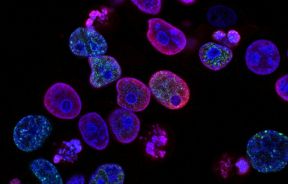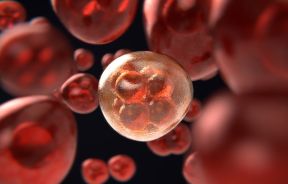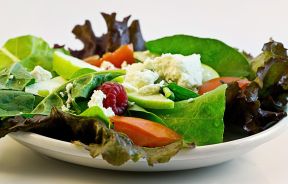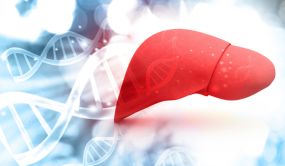Salmonella Bacteria Growth Limited by Nitric Oxide
A new target for nitric oxide has been revealed in studies of how it inhibits the growth of Salmonella. This bacterium is a common cause of food-poisoning.
Every year, approximately 40,000 cases of salmonellosis are reported in the United States. The unreported cases (milder strains or undiagnosed) could be up to thirty times greater. These cases account for 400 deaths from acute salmonellosis where young children, elderly, and immune-compromised are the most susceptible.
Salmonella is a bacteria and a common cause of foodborne a illness sometimes called "food poisoning." The food criminals to make the headlines the last few years have included egg and peanut products. Papaya joined the ranks today being merited with the outbreak of 23 states in the US.
"Nitric oxide is naturally produced in the nose and the gut and other tissues in the body to ward off infection," explained the senior author of the paper, Dr. Ferric Fang. He is a University of Washington (UW) professor of laboratory medicine, microbiology and medicine.
Nitric oxide, not to be confused with Nitrous oxide, the laughing gas in dentist office is similar to the preservatives in hotdogs, Fang said. They also weed out microorganisms that spoil food or cause food poisoning.
The found results underscore that nitric oxide's antimicrobial actions are due to its interference with the metabolism, or energy production of pathogens.
"Nitric oxide imposes substantial metabolic restrictions on bacteria," the researchers noted. Fang explained that its reactions with numerous metabolic targets accounts for the broad-spectrum nature of its success. It keeps many types of disease-causing bacteria at bay. It also prevents an overgrowth of the body's many helpful bacteria.
Fang's team looked at the multi-pronged action of nitric oxide on Salmonella enterica serovar Typhimurium. This type of Salmonella can contaminate food and is similar to the bacteria that cause typhoid fever.
Nitric oxide and related chemicals put Salmonella into a difficult situation called nitrosative stress. When exposed to nitric oxide, Salmonella is unable to make two essential amino acids, methionine and lysine. Without these, Salmonella cannot grow.
"This is bad news for the bacteria, but not for the host," Fang said. "Nitric oxide doesn't damage the host that produces it."
The latest report on the versatility of nitric oxide in arming hosts against pathogens is published in the July 21 issue of Cell Host & Microbe. Dr. Anthony R. Richardson, who is now at the University of North Carolina at Chapel Hill, led the research while he was a postdoctoral fellow in the Fang lab.
Richardson and his colleagues found that nitric oxide and its cousins throw a monkey wrench into several points of the Krebs cycle, also known as the tricarboxylic acid cycle. This cycle is the second stage in cellular respiration, when fuel is broken down to release energy for cell growth and division.
Nitric oxide's targeting of the Krebs cycle is not unique to Salmonella. In learning how the body naturally controls the energy supplies and growth of varied disease-causing organisms, Fang said,
Scientists may be able to develop new broad-spectrum antimicrobials that mimic these effects, drugs that promote the body's own natural defenses against infection, or agents that overcome the ways virulent bacteria compensate when being starved of certain nutrients.
The research was supported by grants from the National Institutes of Health.
Published in the University of Washington News



























